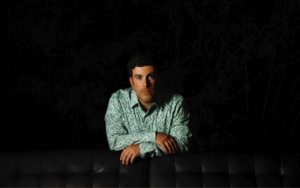 The Handsome Family’s gothic Americana music has a timeless sound. That’s one of the reasons HBO’s True Detective series used their tune “Far From Any Road” in the opening credits. The haunting song sounds like it could’ve been recorded in any year between the mid-1960’s and now.
The Handsome Family’s gothic Americana music has a timeless sound. That’s one of the reasons HBO’s True Detective series used their tune “Far From Any Road” in the opening credits. The haunting song sounds like it could’ve been recorded in any year between the mid-1960’s and now.
What’s the secret to their classic sound?
Well, like most compelling recordings, it’s a combination of good writing, a memorable performance, and magical production.
Brendan Doherty, writing for the website Pyragraph, recently interviewed Brett Sparks of the Handsome Family about the band’s creative influences and recording secrets.
One part of the interview I found particularly interesting was Sparks’ tips on reverb. Asked how he’s able to get such an immediate, present sound while also keeping things spare, Sparks says:
I record in a small very dead space. That helps.
As far as intimate goes, let’s just say I’ve been through my cavern reverb phase. That’s distancing. These days I try to use reverbs that are small. Small to medium rooms or plates. Lately I have also been tending toward using more convolution reverbs. These are “real” reverbs generated from impulse responses (IRs) of actual spaces. Kinda like sampling. So you can put the reverb IR from the Ryman Auditorium (former home of the Grand Ole Opry) on your vocal if you choose. There are hundreds of online IR libraries. I especially love the samples of classic studios.
Don’t forget: You can EQ your reverb. If it’s too bright and diffuse, many reverbs have an EQ feature so you can dampen the “space.”
A good, simple way to get presence is through the use of predelay. Predelay is a parameter on a reverb unit; it is the time between the attack of a sound and the onset of the reverb. By leaving sufficient predelay (especially on vocals) it gives you the lovely tonal color of the reverb but leaves the articulation of the lyrics (or initial attack of the instrument) intact.
I don’t really think about “immediate or present;” I just try to make things sound “good.” Which can be difficult. With Pro Tools you have to make sure that what you put into that box is what you want. This ain’t tape; digital is unforgiving. With tape you get nice compression when you run it hot. Not so with digital.
Fore more recording tips from Brett Sparks of the Handsome Family, check out the full interview on Pyragraph.
